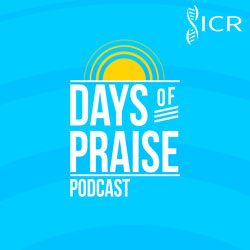“And hath raised us up together, and made us sit together in heavenly places in Christ Jesus.” (Ephesians 2:6)
The Bible clearly identifies the resurrection of Christ as central to the Christian message, just as crucial as the atoning death of Christ. “If Christ be not raised, your faith is vain; ye are yet in your sins” (1 Corinthians 15:17). And just as surely as Christ is raised, we who have put our faith in Him shall be raised.
What kind of body will we have then? “We shall be like him; for we shall see him as he is” (1 John 3:2). In His resurrection body, He could appear and disappear (John 20:19), pass through closed doors (v. 26), be felt by others (Matthew 28:9; John 20:27), eat food (Luke 24:42, 43), and He eventually rose into heaven (Acts 1:9).
Paul, who has been dead nearly 2,000 years, asserted: “We look for the Saviour, the Lord Jesus Christ: Who shall change our vile body, that it may be fashioned like unto his glorious body” (Philippians 3:20-21). How can a person long since dead, whose spirit has been in God’s presence, receive once again a body? This, of course, is a miracle, for the physical elements that once made up Paul’s earthly body have long ago changed their form, and even while he was alive were continually being replaced. No, God will not restore a prior body to the dead but will present them with a new “glorious” body, fit for the eternal environment and service of heaven. Paul could only write of it by analogy, comparing the difference between the old and the new bodies to the difference between a seed and a plant, to different kinds of living things, and to different kinds of celestial bodies. “So also is the resurrection of the dead.” It is sown in corruption, dishonor, weakness, as a natural body, but it is raised in incorruption, glory, and power, as a spiritual body (1 Corinthians 15:37-44). JDM
 Days of Praise Podcast is a podcast based on the Institute for Creation Research quarterly print devotional, Days of Praise. Start your day with devotional readings written by Dr. Henry Morris, Dr. Henry Morris III, Dr. John Morris, and others to strengthen and encourage you in your Christian faith.
Days of Praise Podcast is a podcast based on the Institute for Creation Research quarterly print devotional, Days of Praise. Start your day with devotional readings written by Dr. Henry Morris, Dr. Henry Morris III, Dr. John Morris, and others to strengthen and encourage you in your Christian faith.

















